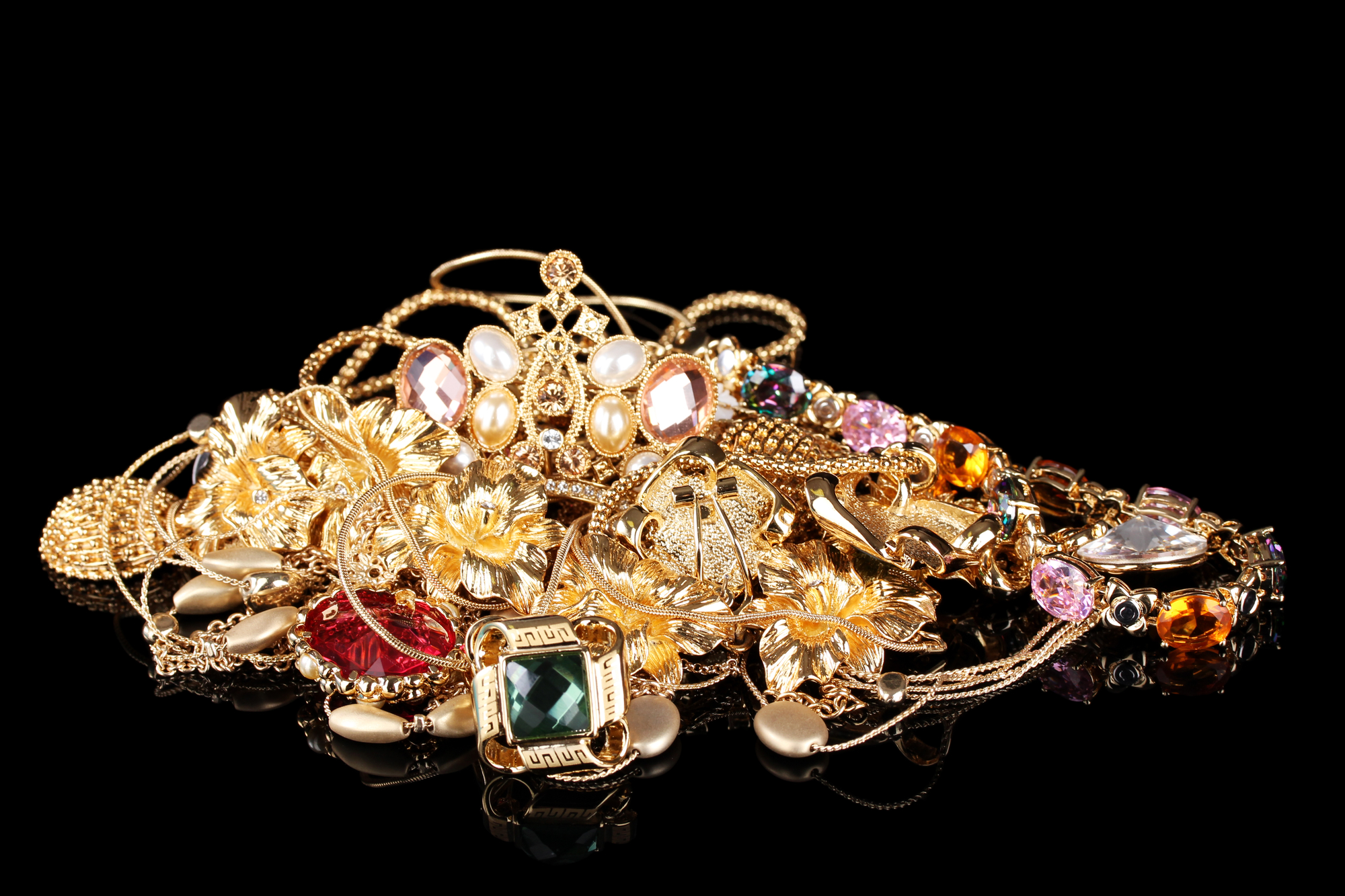Jewelry Care 101
We hand select or make every piece of jewelry at Barbara Oliver Jewelry. I have very high standards, so nothing leaves our shop unless I am completely satisfied that is a high quality, serviceable piece of jewelry. But every piece of jewelry, no matter how meticulously crafted, will experience wear. Well, maybe not the ones displayed in the Smithsonian or Tower of London, but you get my point. You probably paid something, maybe even a lot, for your fine jewelry. And unlike an iPhone, you probably don’t plan on upgrading to the latest model every six months. So you need some basic rules for jewelry care, (if you’re a non-conformist, you can call them guidelines); to help you keep your shiny stuff in museum shape.
Remove Jewelry Before Performing Manual Tasks or Playing Sports
If you had a Ferrari (and if you do, we want you for a customer) you wouldn’t take it off road and try driving it over some rocks. It would be a pretty good joy ride, but only for about a minute. The same goes for your jewelry. It wants to be with you most always, but not when you’re; shucking oysters, lifting weights, building a shed, doing household tasks like cleaning (it hates most chemicals, but especially bleach) or gardening. I’ll make a confession here; I once abraded a prong off my own engagement ring while trying to pull out a weed growing next to a lava rock. Platinum versus lava rock was a mismatch from the start. So show your jewelry some love and let it rest while you’re hard at work (or play).
Jewelry – On Last, Off First
Make this your new mantra. It sounds like something Mr. Miyagi would say, but here’s the reason why, Daniel-san; cosmetics, hairspray, perfumes and even lotions can contain chemicals that can damage jewelry. Even the heat from a blow dryer can affect some gemstones. Putting your jewelry on after you finish your personal care ritual qualifies as common sense. The same goes for when you get ready to turn in. I can’t tell you how many chains break when they snag on a sweater being pulled over someone’s head, but lots and lots would be about right. As soon as you’re ready to dress down instead of up, remove your jewelry and put it in your jewelry box..
No Hot Tubs or Swimming While Wearing Jewelry
First off, both are an obvious way to lose stones or an entire piece – when you swim, for instance, your fingers can shrink (remember the Seinfeld shrinkage episode?). Many a ring has been lost to the bottom of the sea, lake, or cement pond as a result. But there’s an even more sinister force at work. If you’re in a pool or hot tub, the water is usually heavily chlorinated (but especially during family swim time, ever noticed)? Chlorine can react with the metals found in jewelry causing color changes and even structural damage. Many gemstones, notably amethyst, tourmaline and turquoise are also susceptible to discoloration when exposed to harsh chemicals.
Here’s something else to think about as you laze on a beach chair next to the ocean; salt water can be a corrosive force. OK, it’s probably not top of mind; you’re on vacation for goodness sake. Just be aware that exposure to salt water can erode the soldered joints of jewelry, such as repairs, sizing welds, or most ominously, where the mounting of a ring is attached to the shank. Platinum and titanium are relatively more durable than gold, but they’re not indestructible. And as with chlorine and other chemicals, many gemstones are negatively affected by salt water. Going to the seaside? Leave the gems. Take the cannoli.
Jewelry Doesn’t Need a Bath or Bed Time
Which, come to think of it, makes raising jewelry a lot easier than kids. Remove your jewelry before showering or cleaning up as part of your jewelry care routine. Soap and shampoos & conditioners can cause a film to form, making it appear as dull as a C-Span binge marathon. And obviously jewelry, but especially necklaces, can also be damaged while you thrash around in the throes of a corrosive salt water nightmare. I know, you’re soooo sleepy, and the night stand is almost a whole foot away from the bed. Suck it up soldier, and take your delicate pieces off.
Proper Storage of Jewelry
Throwing everything together into a drawer is guaranteed to cause problem. Hard diamonds pick on softer stones, chains get tangled, and of course, pieces get lost. Ideally you have a proper jewelry box that keeps pieces separated. If you don’t have one, at least wrap them separately in soft cloth and put them in a shoe box or margarine tub. You get the idea. Keep in mind that opal and pearls also need a little humidity or they can crack. So don’t store them in a safety deposit box, and don’t let them dry out. Once they do, they can’t be revived.
When Traveling with Jewelry, Use a Jewelry Roll
Traveling can be tough on jewelry, so it’s wise to use a travel case to protect your favorite pieces. Jewelry rolls are usually made of padded fabric or leather, with snaps and bands intended to secure your jewelry. Obviously you also don’t put it in your checked luggage, where rough handling (not to mention theft) may be a concern. It’s a small investment to make when you’re on the road with your jewelry to assure proper jewelry care.
Part II — Jewelry Care: Keeping Your Jewelry Sparkling
Check out our blog on “Care for Jewelry – Cleaning” for some general guidelines to make jewelry cleaning easy and help keep your jewelry looking good.

